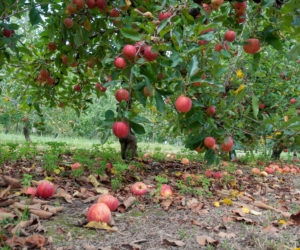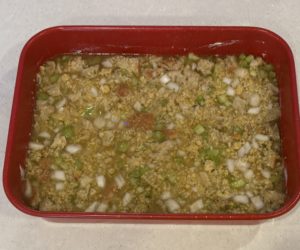
When Americans hear or read the word corn, they immediately think of a yellow vegetable that grows on stalks and that the state of Iowa is famous for.
However, prior to the year 1492 CE, the word corn was a Germanic word that was used in reference to various grains produced in the Old World such as wheat, oats, barley and rye.
From Bon Appétit:
“Corn” itself, though, has much deeper roots, going back to the misty prehistory of Proto-Indo-European. Both “grain” and “corn” come from the same very old PIE word, though there are two options for which that might be: either ger-, meaning “worn down,” or gher-, meaning “matured.” That stem wound up through Latin, on the one hand, which kept the G and gave us today’s “grain,” and through the Germanic languages, which, in their no-nonsense way, turned the G into a hard K, and gave us “corn.”
What is now called corn was originally called maize and originated in Mexico.
From Camp Silos:
The corn eaten by the Pilgrims wasn’t the yellow sweet corn that modern-day Americans eat. Instead, the Pilgrims ate Flint corn.

From History.com:
Flint corn, or Indian corn, is one of the oldest varieties of corn, a type that Native Americans taught the early colonists how to cultivate. Its kernels, which come in a range of colors including white, blue and red, have “hard as flint” shells, giving this type of corn its name. Flint corn kernels contain a small amount of soft starch surrounded completely by a larger amount of hard starch, which means the kernels shrink uniformly when drying and are dent-free and less prone to spoiling (and therefore ideal for autumnal décor). Despite its tough exterior, this type of corn can be consumed by livestock and humans, and is used in such dishes as hominy and polenta.
The 1621 Thanksgiving celebration marked the Pilgrims’ first autumn harvest, so it is likely that the colonists feasted on the bounty they had reaped with the help of their Native American neighbors. Local vegetables that likely appeared on the table include onions, beans, lettuce, spinach, cabbage, carrots and perhaps peas. Corn, which records show was plentiful at the first harvest, might also have been served, but not in the way most people enjoy it now. In those days, the corn would have been removed from the cob and turned into cornmeal, which was then boiled and pounded into a thick corn mush or porridge that was occasionally sweetened with molasses.
So, the Pilgrims ate a corn-based food but didn’t eat yellow corn on the cob.
Image of Flint corn by Iraexist (10 October 2015) and is licensed under the Creative Commons Attribution-Share Alike 4.0 International license.
Featured Image in Public Domain
The “Wanted” posters say the following about David: “Wanted: A refugee from planet Melmac masquerading as a human. Loves cats. If seen, contact the Alien Task Force.”
















